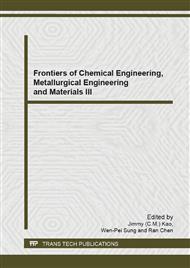p.749
p.754
p.758
p.762
p.766
p.770
p.777
p.781
p.785
Carbon Reduction in Mega Event’s Building: a Case Study of China Pavilion
Abstract:
Building sector is one of the main sources of anthropogenic greenhouse gases emissions. Comprehensive countermeasures are needed in cities to mitigate carbon emissions from buildings. This paper reviewed sustainable strategies that implemented in China Pavilion, the main exhibition building of Expo 2010 Shanghai China, and analyzes the achievement that the building has made in carbon mitigation. The results showed that energy saving design in construction and energy efficient technologies in appliance played a vital role in energy reduction and carbon mitigation in building. It also showed that solar photovoltaic power generation system applied in building would bring carbon reduction. The technologies bring with the building a reduction 6.5 kt CO2 each year. These green measures not only helpful in realize the goal of green event, but also will play a role in realizing low carbon society in the future.
Info:
Periodical:
Pages:
766-769
Citation:
Online since:
August 2014
Authors:
Keywords:
Price:
Сopyright:
© 2014 Trans Tech Publications Ltd. All Rights Reserved
Share:
Citation:


